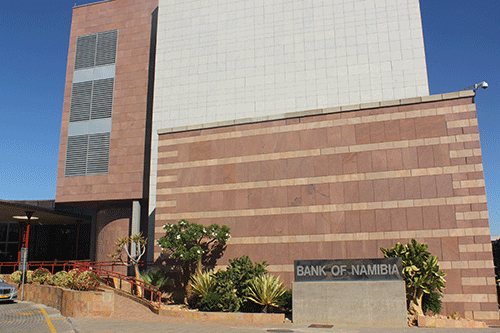The Bank of Namibia is expected to throw yet another jab at consumers with the third repo rate announcement of the year this morning.
Many predict that the central bank’s monetary policy committee (MPC) will increase the repo rate as inflation remains stubborn and following the South African Reserve Bank’s (SARB) decision to increase their rates by 50 basis points to 8.25% recently.
The repo rate stands at 7.25%, while the prime lending rate stands at 11%.
Professor Teresia Kaulihowa from the Namibia University of Science and Technology (NUST) said the central bank is expected to follow SA’s repo rate hike by increasing by at least 25 basis points. With the current margin between South Africa and Namibian repo rates at 1.25 basis points. She said it will be costly for Namibia to not proportionately adjust its repo rate.
“However, some schools of economic thought (Keynesian) do not support a hike in interest rates to address supply-driven inflation. It emphasises the importance of aggregate demand in driving economic growth and believes that changes in aggregate demand have a more significant impact on the economy than changes in the money supply or interest rates,” she stated.
Kaulihowa further argued that raising interest rates would be ineffective in addressing the root cause of inflation because it primarily focuses on demand-side factors. Instead of relying on monetary policy tools like interest rate hikes, other fiscal policy measures to address supply-driven inflation can be used to address supply constraints (targeted sectoral support) more so for countries not under a currency board operations arrangement, she added.
On the other hand, she stated by raising borrowing costs, it can reduce consumer spending and investment, which can potentially dampen demand and help alleviate inflationary pressures. However, she noted it’s important to consider the potential drawbacks and limitations of using interest rate hikes to tackle supply-driven inflation.
“One concern is that raising interest rates may not directly address the underlying supply constraints causing inflation. Since inflation is driven by factors such as shortages on key inputs or production bottlenecks, increasing interest rates may not have a significant impact on resolving those issues. Higher interest rates can also increase the burden of debt for households and businesses, potentially leading to financial stress and reduced consumption, investment and potentially hampering economic growth
“The Namibian repo rate is currently 1% below that of SA, quite an exceptional state of affairs, although not without precedent. The monetary policy committee (MPC) of BoN is primarily concerned with the currency peg, that is the one-on-one link of the Namibian dollar to the SA rand. Therefore, for as long as the MPC is satisfied that the link is not under threat from destabilising capital flows, it can maintain a differential, which is currently at a discount, with the SA repo rate,” explained the chief economist at Capricorn Asset Management, Floris Bergh.
The Economic Association of Namibia (EAN), which is a Namibian non-governmental organisation conducting research and providing public policy advisory services stated the increase in the repo rate will have an impact on consumers and loan repayments.
“When the central bank raises the repo rate, it becomes more expensive for commercial banks to borrow money, which can lead to an increase in lending rates for consumers. As a result, consumers will have to allocate more of their income towards servicing their loans, which could reduce their disposable income and impact their spending habits,” reads the statement they issued.
EAN continued that higher interest rates can also affect the affordability of new loans, it becomes more expensive for individuals and businesses to borrow money, which can lead to a decrease in demand for credit. This reduction in borrowing and spending can have a dampening effect on economic growth, as consumption and investment may slow down.
On the other hand, the EAN noted that when the currency is pegged to another currency, it remains crucial for maintaining price stability of the currency peg. Also, investors can potentially benefit from increases in interest rates as higher rates can lead to increased returns on fixed-income investments such as bonds, certificates of deposit (CDs), and savings accounts.
Consumers cry
Bergh noted unfortunately, as consumers are largely price takers, there is little they can do to influence prices other than trying to consume less of those highly priced items and luxuries, if at all possible. However, it is hard to avoid buying bread and petrol, he narrated.
He further advised consumers to be careful and hesitant to incur debt in a rising interest rate environment.
“Rather seriously attempt to save at these beneficial rates, which means the postponement of consumption. In a broader sense, this means having a savings mindset, looking for investment assets that benefit from the shifting landscape such as higher interest rates and a weakening currency,” urged Bergh.
Moreover, the South African Savings Institute, an independent non-profit organisation, recently warned that Namibian consumers should be prepared for the worst.
The Savings Institute’s Gerald Mwandiambia cautioned that homeowners, in particular, will be hardest hit.
“Speak to your financial institution; look at getting an extension on the term. This will reduce your home loan payments – and remember this is a last resort. Salaries are not going up as much as inflation and the cost of living. Most of us are living on 50% of what we were earning in 2018 but servicing the same bills. Anything more than this will lead to an economic recession,” Mwandiambia cautioned.


